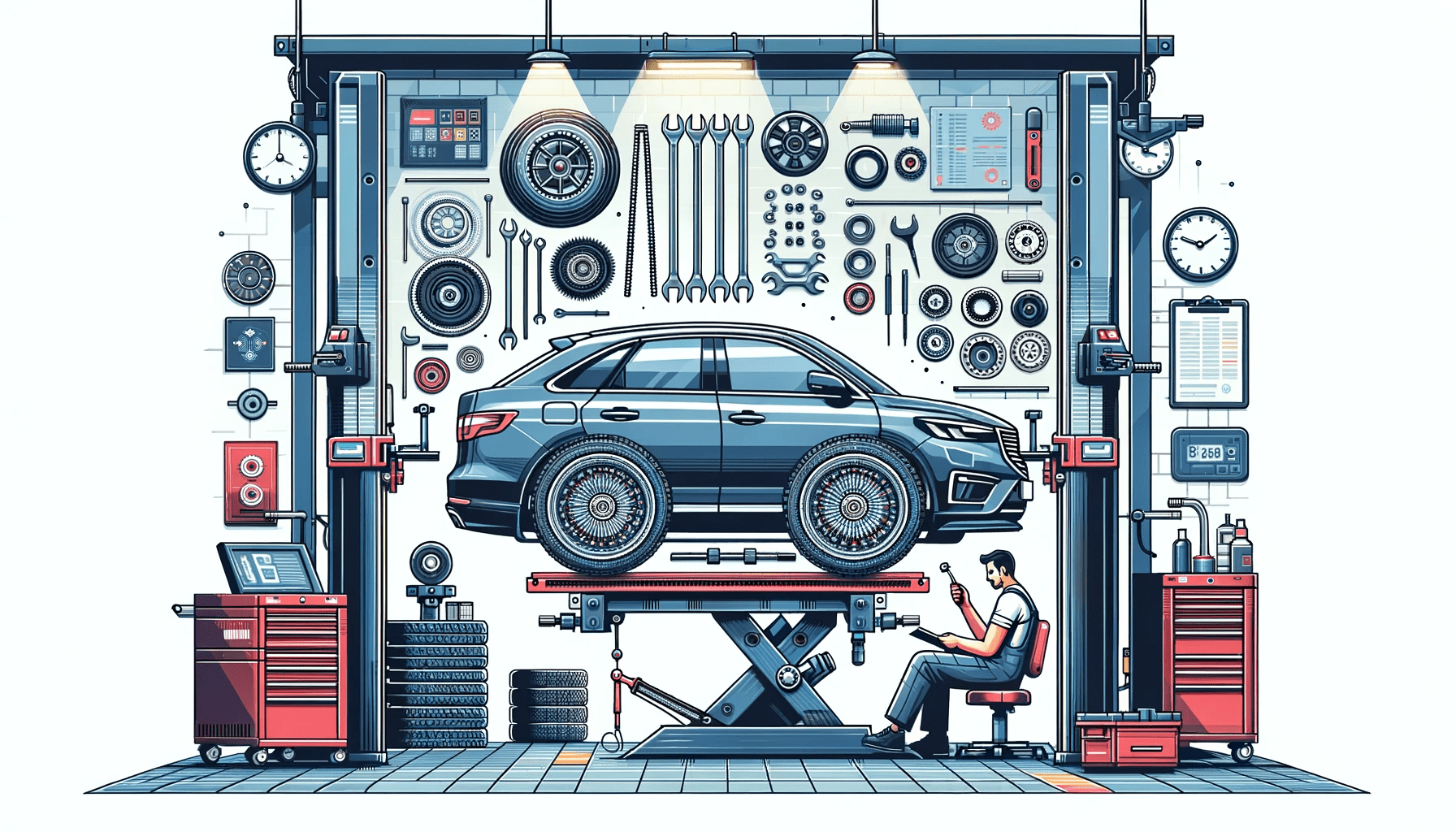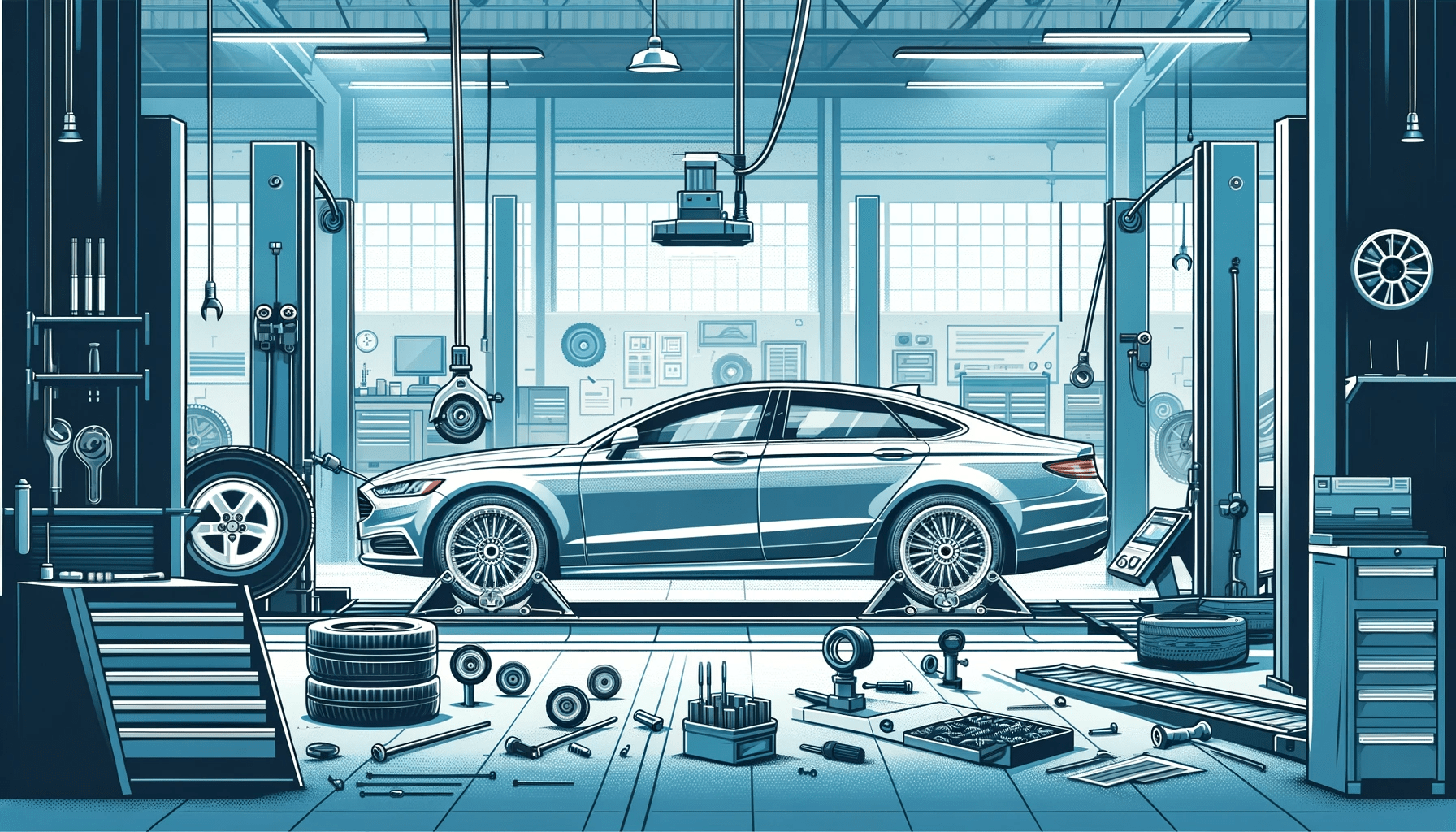Modifying a vehicle, especially its suspension system, can significantly affect its wheel alignment. Proper wheel alignment is crucial for maintaining optimal handling, safety, and tire longevity. This becomes even more important after modifications such as installing new suspension components or altering the vehicle’s ride height. Wheel Alignment After Mods- let’s find out more!
Key Takeaways
| Aspect | Importance |
|---|---|
| Alignment Necessity | Essential after modifications to maintain handling, safety, and tire life. |
| Handling Improvement | Correct alignment enhances vehicle handling and response. |
| Tire Wear Reduction | Prevents uneven tire wear, extending tire lifespan. |
| Fuel Efficiency | Proper alignment can improve fuel efficiency. |
| Suspension Component Fit | Essential to check for proper fitment of aftermarket components. |

Why Wheel Alignment is Crucial After Mods
- Handling and Safety: Misalignment can lead to poor handling and increased safety risks.
- Tire Longevity: Ensures even tire wear, extending the life of your tires.
- Fuel Efficiency: A well-aligned vehicle requires less energy to move, potentially improving fuel efficiency.
Types of Alignments
- Two-Wheel Alignment: Adjusts only the front wheels. More common in vehicles with a solid rear axle.
- Four-Wheel Alignment: Adjusts all four wheels. Recommended for vehicles with independent rear suspension.
Alignment Angles
- Camber: The tilt of the tire inwards or outwards. Affects tire wear and cornering.
- Toe: The direction the tires point relative to the vehicle’s centerline. Impacts tire wear and straight-line stability.
- Caster: The angle of the steering axis. Influences steering feel and stability.
Post-Modification Considerations
After installing performance shock absorbers or other suspension mods, a thorough alignment check is crucial. This ensures that the new components are properly aligned and functioning as intended.

Real-Life Example
Consider a Ford F150 with upgraded suspension components. After adding new shocks and altering the ride height, a wheel alignment is vital to ensure the truck handles correctly and the tires wear evenly, maintaining its off-road and on-road capabilities.
Q&A Section
| Question | Answer |
|---|---|
| Why is wheel alignment important after mods? | To maintain handling, safety, and ensure even tire wear, especially after changes in suspension or ride height. |
| What types of alignments are there? | Two-wheel alignment for vehicles with a solid rear axle, and four-wheel alignment for independent suspensions. |
| What are the key alignment angles? | Camber (tilt of the tire), toe (direction of the tires), and caster (steering axis angle). |
| How does alignment affect fuel efficiency? | Proper alignment reduces the energy required to move the vehicle, potentially improving fuel efficiency. |
| Should alignment be checked after all mods? | Yes, especially after installing new suspension components or altering ride height. |
| Can misalignment affect tire life? | Yes, it can lead to uneven tire wear, reducing the lifespan of the tires. |
| What impact does alignment have on handling? | Correct alignment enhances vehicle handling and response, improving the overall driving experience. |
| Is alignment a DIY task or a professional job? | It’s recommended to be done by professionals, especially after complex modifications. |
Conclusion
Wheel alignment is an essential step after any vehicle modification, particularly those affecting the suspension or ride height. It ensures that your vehicle performs optimally, maintains tire health, and operates safely. For more information on suspension tuning, visit suspension car performance tuning.